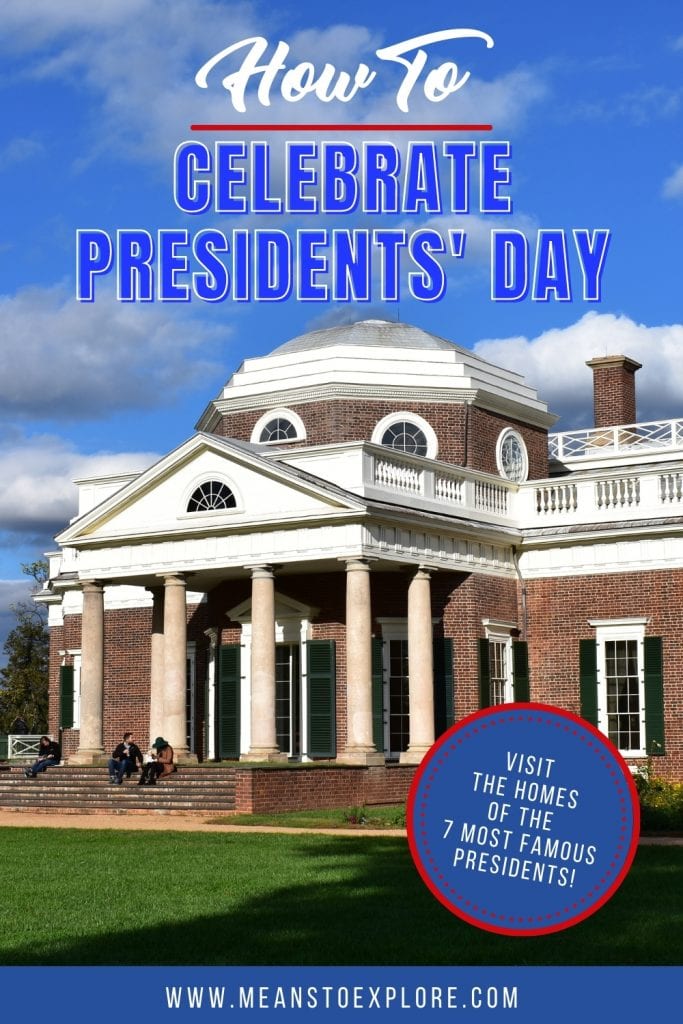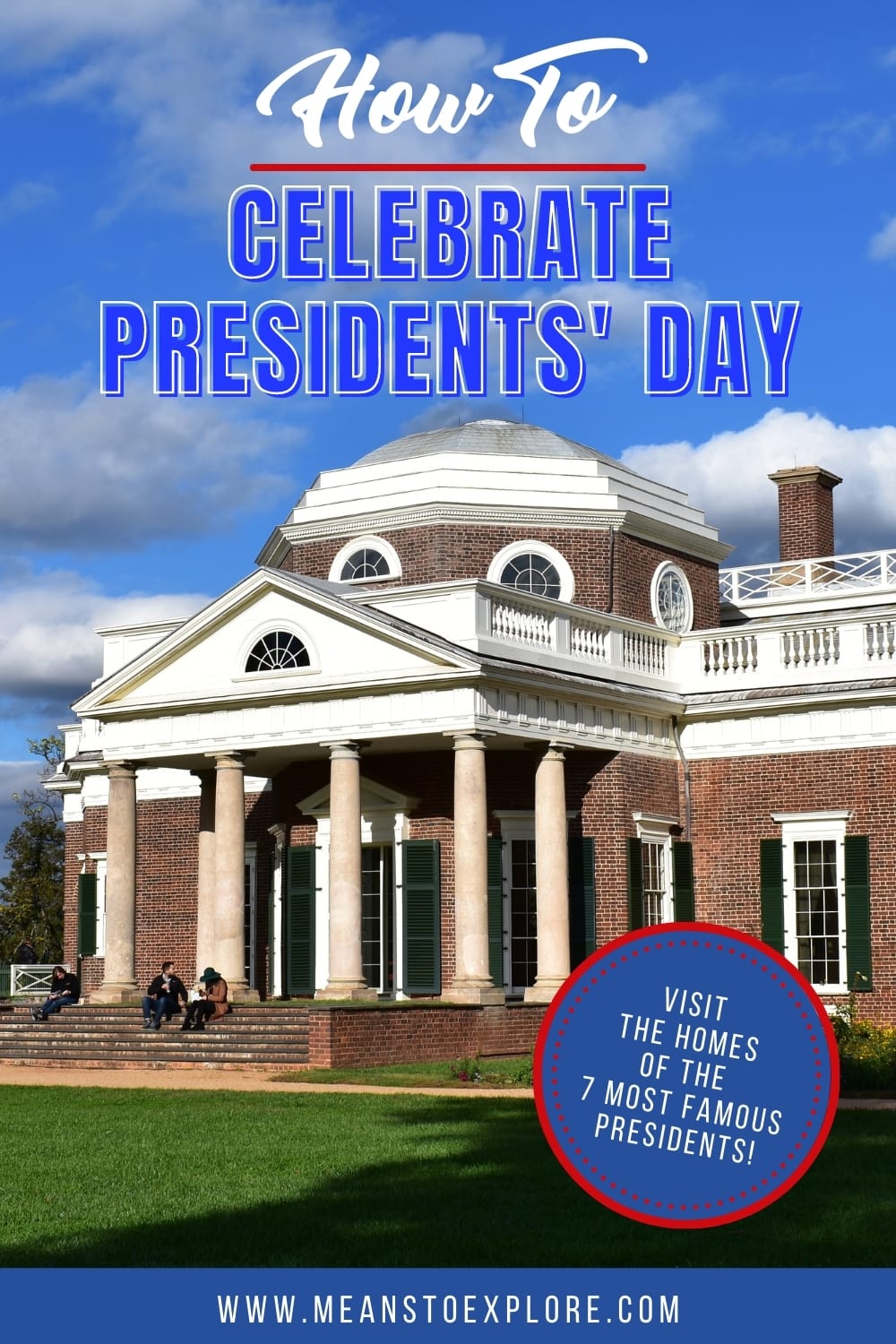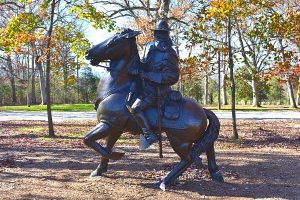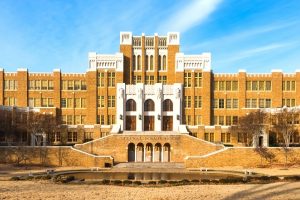Wondering how to celebrate Presidents’ Day? Why not check out a famous presidential home?
And no, I don’t mean the Executive Mansion, aka the White House, in DC.
Discover how the 7 most famous US Presidents lived BEFORE they got the title that would make them famous.
Presidents’ Day in the United States is a peculiar holiday. It’s one of those federal holidays that most people don’t get off of work, yet retailers use as an excuse to run a sale.
If you’re lucky enough to get the day off, embrace the intent of the holiday and learn more about some former presidents!
Touring a private residence of a past president is a great way to celebrate Presidents’ Day.
Even if you don’t get the holiday off of work, these are great additions to road trips or day trips on the weekends if you live nearby.
Here are 7 historic homes you can visit that used to belong to famous US Presidents.
This post may contain affiliate links. As an Amazon Associate and associate of other programs, I earn from qualifying purchases. This means if you click a link and make a purchase, I may earn a small commission at no extra cost to you.
7 Presidential Homes to Visit to Celebrate Presidents’ Day
There are many presidential birthplaces, homes, farms, ranches, and libraries to visit in the US, but they’re unsurprisingly concentrated in the eastern half of the US.
Instead of sorting them all by location, I’ve chosen presidents everyone knows, arguably the most famous (at least according to the internet’s general consensus).
The 7 most famous US Presidents are (in chronological order):
- George Washington
- John Adams
- Thomas Jefferson
- Andrew Jackson
- Abraham Lincoln
- Theodore Roosevelt
- Franklin Roosevelt
Check out the homes of these 7 influential American presidents.
George Washington’s Mount Vernon Estate
Everybody knows George! “Here comes the General!” (you sang that correctly in your head, didn’t you?)
George Washington’s beloved Virginia home, Mount Vernon is just south of Washington, DC on the Potomac River.
This is a great day trip option from DC, where you can return at night to see the Washington Monument lit up at night.
This being Washington’s Birthday (observed), admission is free on Presidents’ Day but regular general admission fees apply every other day.
Explore George and Martha Washington’s home and estate. Tour the mansion, walk the gardens, and see the farm.
Several special tours are available for an additional fee. The Enslaved People of Mount Vernon tour is free of charge but still requires a timed ticket reservation. I haven’t done it yet, but I bet the Hamilton The Musical Tour is a real treat for fans!
Members get first dibs at tickets, and what’s left becomes available to the public to be reserved online a few days before the holiday. Mansion tours require a timed ticket, available on-site day of, on first come, first served basis.
Check the Mount Vernon website for current info and prices.
Thomas Jefferson’s Monticello Estate
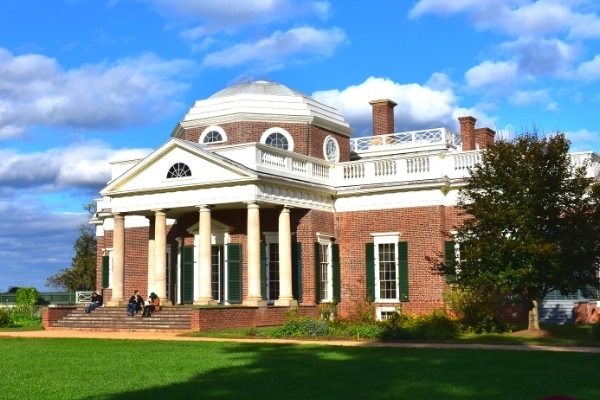
Discover Monticello, the Virginia mountaintop home of Thomas Jefferson. Yes, another Virginian. It was a whole thing.
Jefferson was a complicated and complex man. He was a politician his entire life, but he also enjoyed experimenting with botany, creating his own unique flowers and vegetables.
He was a gifted writer, the author of the Declaration of Independence, and an avid reader. He struggled with money, though, which often came back to haunt him, forcing him to sell possessions, like his personal library, to stay afloat.
The third president even enjoyed architecture and was continually redesigning his home throughout his life.
See Jefferson’s home for yourself with many of his original possessions on display.
The front entry looks like he took everything Lewis and Clark sent back from their expedition and nailed it to the wall. It’s fascinating.
The grounds are beautiful in all seasons, and additional special tours are available discussing topics like Slavery at Monticello, The Hemings Family, and the Gardens & Grounds.
Don’t miss a Behind-the-Scenes Tour of the house so you can visit the upper floors and iconic dome!
Check the Monticello website for current info and prices.
Abraham Lincoln Birthplace National Historical Park
A simple log cabin in Kentucky, about an hour south of present-day Louisville, KY, is where Abraham Lincoln was born in 1809.
Indiana claims Lincoln’s boyhood home, and Illinois claims Lincoln’s adulthood and propulsion into politics. But the backwoods of Kentucky will always be Abe Lincoln’s birthplace.
President Lincoln is the quintessential American story: humble frontier beginnings, unafraid of work, put himself through law school, got into politics, and became President of the United States at the most divisive time in American history.
Ok, that last part isn’t exactly typical, but Abe was a true American dreamer.
While the log cabin at this original Lincoln memorial site is not the original Lincoln family log cabin, it’s still an important site to visit to truly appreciate the humble beginnings of one of America’s greatest presidents.
This is a National Park Service site, but it’s definitely off the beaten path. It’s best added on as a side trip along the way to visit somewhere else, as there’s not a ton to do here.
Mammoth Cave National Park is an hour south, and Louisville is an hour north. Nashville is about 2 hours south.
Check the NPS site for more info, hours, and a map.
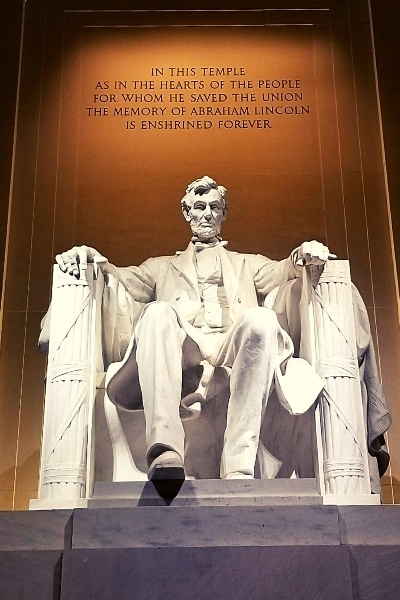
Adams National Historical Park
The first father-son pair of presidents: John Adams and John Quincy Adams (2nd & 6th, respectively) were born in different homes but on the same farm. The two homes are right next to each other in Adams National Historical Park in Quincy, Massachusetts.
It’s an easy train ride to get here from Boston. Just hop on the T’s southbound Red Line and disembark at Quincy Center station. The Adams National Historical Park Visitor Center is right across the street.
Guided tours of both birthplaces are included in general admission to the park, but a timed ticket is still required. Start at the Visitor Center to get your timed tour tickets.
Note that the houses aren’t open during the winter. I know, that’s a bit of a bummer if you intended to visit on Presidents’ Day, but the visitor center has a lot of info and you can still explore the grounds outside the homes.
Quincy is no longer the farmland the Adams’ knew, so leave your car parked at the Visitor Center and use the complimentary NPS shuttle to navigate around the park.
Both Adams-es were pretty extraordinary people and worth getting to know better.
Check out the NPS website for current info and maps.
Home of Franklin D. Roosevelt National Historic Site
Just north of Poughkeepsie, in Hyde Park, New York on the Hudson River is the Home of Franklin D. Roosevelt National Historic Site.
Springwood was the birthplace and home of FDR, but this site also includes his Presidential Library and Museum as well as Franklin and Eleanor Roosevelt’s graves.
Springwood is maintained today by the National Park Service, but the Presidential Library and Museum is operated by the National Archives. Purchase a joint ticket at the Visitor Center and you can see both.
Pro Tip: Start with Springwood. The Presidential Library and Museum portion of your ticket is good for two consecutive days, and you can always return tomorrow if you run out of time.
The gardens and grounds are free to explore. You’ll find the gravesite memorial in the Rose Garden.
Springwood was a bit smaller and humbler when Franklin was born there, but after his father’s death, he had the home renovated and expanded to accommodate both his mother and his wife and growing family. He had quite the complicated family relationships…
Preservation efforts maintain the home as it would have been in the 1940s with FDR’s original possessions.
Roosevelt hosted many political guests and foreign dignitaries at Springwood. Winston Churchill visited several times, and even King George VI and Queen Elizabeth stayed once. You’re walking in their footsteps as you stroll through the gardens!
Check the NPS website for FDR’s home for current prices and info.
Theodore Roosevelt’s Sagamore Hill National Historic Site
Sagamore Hill was Teddy Roosevelt’s Oyster Bay, New York home, when he needed to escape the city. He also often used it as his Summer White House when in office.
Don’t confuse the Hyde Park (Franklin) Roosevelts with the Oyster Bay (Teddy) Roosevelts. Theodore is the elder. The two presidents are actually 5th cousins, and Eleanor Roosevelt was Teddy’s niece.
Theodore Roosevelt was actually born and raised in a townhouse in NYC, which you can also tour, not far from today’s Flatiron Building. Sagamore Hill, however, better reflects the President as the man most people recognize.
TR’s study at Sagamore Hill is decorated with various hunting trophies and skins from his trips around the world.
He made himself into the burly, boisterous man that became President. Teddy was a sickly kid. Happy, but utterly determined to remake himself into a healthy adult, which he did with numerous trips out west to the Dakotas.
Sagamore Hill is in beautiful Oyster Bay, on the north side of Long Island, a good way to spend a day away from NYC.
Visiting the grounds and the Old Orchard Museum are free, but you must make House Tour Reservations and pay in advance via the Recreation.gov website.
Check the NPS website for more information and current prices.
Andrew Jackson’s The Hermitage
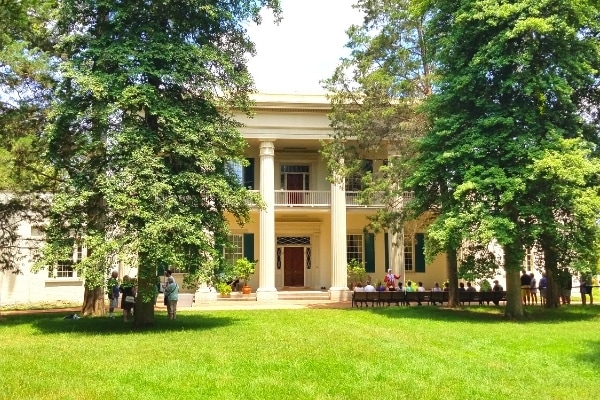
Just outside of Nashville, Tennessee is Andrew Jackson’s adulthood home: The Hermitage.
His boyhood home is a state park in South Carolina, near Charlotte, NC.
Jackson was a tough, no-nonsense soldier and politician. He was lauded as the people’s president for being more down to earth than his predecessors, but typical for his time period, “the people” didn’t really mean everyone.
The Hermitage is a bit of a misnomer for Jackson’s home. This is no tiny hovel; this is a proper gentleman’s manor home.
It may have had humble beginnings, but it didn’t stay that way very long. Tour the home for a glimpse into our 7th president’s home life.
Continue around the grounds to explore the enslaved people’s homes and their way of life on the farm. Many were devoted to the Jackson family even after emancipation, living out their lives on the estate and even buried in the estate’s cemetery near the President and his wife.
It gets pretty dang hot here in the summer, and there’s no air conditioning in the house. Go early in the day, do the house tour first, and then come back to the air conditioned museum by the entrance during the heat of the day.
Check out The Hermitage website for current information and prices.
When is Presidents’ Day?
Presidents’ Day is observed every year on the third Monday of February. Most businesses in the US do not observe every federal holiday, and Presidents’ Day is usually one of the first to get taken off the list.
Federal buildings, banks, post offices, and the New York Stock Exchange will all be closed. Some schools will get the day off, but many others won’t.
Retailers will all be open and almost every single one will have a sale.
When was Presidents’ Day established?
Originally created as Washington’s Birthday to celebrate America’s first president, the day officially became a national holiday in 1885, almost a century after George Washington’s death.
In the 1960s, Congress passed the Uniform Monday Holiday Act in an effort to create more three-day weekends for laborers (but really to try to reduce the number of employees that would call in sick on a Friday after a Thursday holiday).
The holiday would now be the third Monday of every February, conveniently falling between Washington’s February 22nd birthday and Lincoln’s February 12th birthday. For this reason, many people started calling it Presidents’ Day.
The holiday is still officially listed as Washington’s Birthday, but most Americans recognize it as Presidents’ Day, even though we don’t really celebrate it.
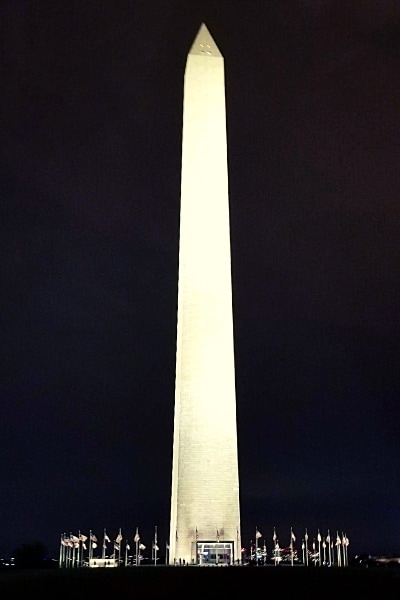
What to Do on Presidents’ Day?
So, you actually get this day off of work: how do you celebrate Presidents’ Day?
There are no fireworks like Independence Day or New Year’s Day. There aren’t any cookouts like Memorial Day or Labor Day.
By the middle of February, most people have given up on their New Year’s resolutions and are sick of winter weather.
A day off is nice but what are you supposed to do in the middle of winter?
Here’s a few ideas for how to celebrate Presidents’ Day, your unusual day off.
1. Visit a former president’s home and see how they lived outside of the spotlight.
There is a surprising variety of backgrounds: rich, poor, young, old. However, geographically the presidents are decidedly skewed to the eastern half of the US, so this may be more difficult for those of you who live in the western half.
2. Use the three-day weekend for a mini-getaway.
The perfect excuse for a short trip! This holiday also sometimes lines up with Valentine’s Day. Go get cozy in a cabin with your sweetie!
3. Take a mental health day and do whatever makes you happy.
Binge watch a favorite show. Read a book. Go outside. Stay inside. The key is “whatever makes you happy.”
4. Get a head start on spring cleaning.
Some of you are happiest when organized and actually like to clean. You do you! Get organized and get ready for spring and warmer weather!
5. Go on a dream-cation and plan your next vacation.
Take the day to research your next dream trip and estimate a rough cost. Once you have a cost, create a plan to save for that dream trip!
Happy Travels!

About the Author: Rachel Means
With six-figure student loan debt and only 10 PTO days per year, Rachel started traveling the world. A decade later, she’s paid off her loans, changed careers, and been to 36 US states and 14 countries. She’s an expert at planning and budgeting for travel and loves to help others do it, too! Read her full story here.
Share it!
